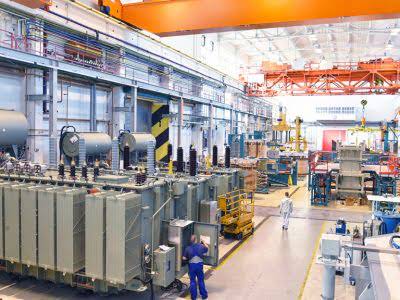
In the July 2023 NOPR, DOE noted that its own test data indicate that heat pump water heaters with backup electric resistance elements typically do not use the elements during DOE’s 24-hour simulated use test. Therefore, adding an efficiency level that corresponds to a “heat-pump only” design option as max tech would not be expected to change the UEF. In response to the July 2023 NOPR, DOE received questions from BWC asking whether space-heating products that are capable of heating domestic hot water by means of an indirect water heater tank would be considered circulating water heaters. In response to the December 2023 SNOPR, Pickering provided comments raising concerns about the potential for evaluating efficiency gains if there is overlap between these types of systems and circulating water heaters. As a result of the considerations discussed in the previous sections, DOE is establishing that the high-temperature test method must be conducted for all electric storage water heaters, except for those meeting the following exemptions.
A. Trial Standard Levels
- DOE estimates that industry must invest $239.8 million to comply with standards set at TSL 2.
- (2 U.S.C. 1535(a)) DOE is required to select from those alternatives the most cost-effective and least burdensome alternative that achieves the objectives of the rule unless DOE publishes an explanation for doing otherwise, or the selection of such an alternative is inconsistent with law.
- New and amended standards apply to consumer water heaters manufactured 5 years after the date on which any new or amended standard is published.
- The Ascent is a Motley Fool service that rates and reviews essential products for your everyday money matters.
- However, this must be done competitively – otherwise, the goods would be too expensive and fewer customers would purchase from the company.
- DOE has determined not to create separate product classes for circulating water heaters.
- Based on the amount of FFC savings, the corresponding reduction in emissions, and the need to confront the global climate crisis, DOE has determined the energy savings from the standard levels adopted in this final rule are “significant” within the meaning of 42 U.S.C. 6295(o)(3)(B).
For any given efficiency level, DOE measures the change in LCC relative to the LCC in the no-new-standards case, which reflects the estimated efficiency distribution of consumer water heaters in the absence of new or amended energy conservation standards. In contrast, the https://www.bookstime.com/ PBP for a given efficiency level is measured relative to the baseline product. Rheem supported DOE’s methodology to conduct the EF to UEF crosswalk for electric storage water heaters and gas-fired storage water heaters that currently do not have UEF-based standards.
Gross Profit Margin
In other words, after calculating it, your profit margin ratio lets you know how much of each dollar received in sales is left over after the cost of goods sold is factored in, either as cents on the dollar or as a percentage. Both gross profit margin (also known as gross profit) and net profit margin (also known as net income) are used to establish how profitable a company is. One of the best ways to look at sales profitability as well as the overall financial health of your business is by calculating gross margin ratio. This is used to show how much revenue is left over after paying variable costs such as wages and raw materials. It is the same as the company’s return on sales, and indicates how well that return is being managed.
What Is a Good Net Profit Margin?
- Switching from a GSWH to a GIWH would therefore require replacing the venting in either case.
- It can be used to (1) evaluate profitability, (2) help set pricing, and (3) make comparisons between peers.
- DOE agrees with BWC that manufacturers do not always ship trucks completely full of one type of water heater.
- Approximately 0.2 percent of gas storage water heater shipments and approximately 4 percent of all electric storage water heaters shipments would meet TSL 6 efficiencies by 2030.
- DOE stated that while it has the authority to set standards for products that meet the definition of a consumer water heater (42 U.S.C. 6292(a)(4)), this rulemaking is not currently considering standards for hot water dispensing products.
- Looking carefully at the Income Statement, we can see that Gross Profit is simply the Total Revenue minus the Cost of Goods Sold.
EPCA provides that a manufacturer whose annual gross revenue from all its operations does not exceed $8 million may apply for an exemption from all or part of an energy conservation standard for a period not longer than 24 months after the effective date of a final rule establishing the standard. (42 U.S.C. 6295(t)) Additionally, manufacturers subject to DOE’s energy efficiency standards may apply to DOE’s Office of Hearings and Appeals for exception relief under certain circumstances. Manufacturers should which ratio is found by dividing gross margin by sales? refer to 10 CFR part 430, subpart E, and 10 CFR part 1003 for additional details. As such, DOE is finalizing the product-specific enforcement provisions for circulating water heaters as proposed in the July 2023 NOPR. DOE may re-evaluate the product-specific enforcement provisions for these products in a separate rulemaking. The preservation of operating profit scenario reflects manufacturers’ concerns about their inability to maintain margins as MPCs increase to reach more stringent efficiency levels.

Therefore, DOE is exempting all very small electric storage water heaters from having to test to the high-temperature test method to demonstrate compliance with new UEF-based standards. Accordingly, the Secretary has concluded that TSL 2 would offer the maximum improvement in efficiency that is technologically feasible and economically justified, and would result in the significant conservation of energy. Although results are presented here in terms of TSLs, DOE analyzes and evaluates all possible ELs for each product class in its analysis. TSL 2 comprises efficiency levels that offer significant LCC savings while keeping the percentage of consumers experiencing a net cost at a modest level. In particular, lower-income homeowners who currently use small ESWHs are significantly less likely to be disproportionately impacted at TSL 2 than at higher TSLs.

F. Life-Cycle Cost and Payback Period Analysis
- DOE is maintaining the provisions in appendix E, which result in a higher effective storage volume to products that have an internal tank temperature five degrees above the delivery set point temperature in order to assess products on an equivalent effective storage volume basis.
- At TSL 4, the large conversion costs result in a free cash flow dropping below zero in the years before the standards year.
- UEF decreases with increased tank temperature; therefore, the water heater is expected to perform at least as well as a high-temperature rating evaluated at the highest tank temperature set point, all other environmental conditions the same.
- While DOE recognizes that TSL 2 is not the TSL that maximizes net monetized benefits, DOE has determined that TSL 2 is designed to achieve the maximum improvement in energy efficiency that is technologically feasible and economically justified.
- He has been a manager and an auditor with Deloitte, a big 4 accountancy firm, and holds a degree from Loughborough University.
- As with the previous two ratios, the higher the better but remember to compare the result with companies in the same industry as the results will vary widely from industry to industry.
The capital investment balance is the Rands you’d need to maintain and replace assets over time. Many profitable companies struggle to collect enough cash to operate the business each month. If a plumber generates R300,000 in sales a year, their goal is to maximise earnings (profit) generated from sales. Margin ratios explain how well the plumber generates profits from each Rand of sales.
